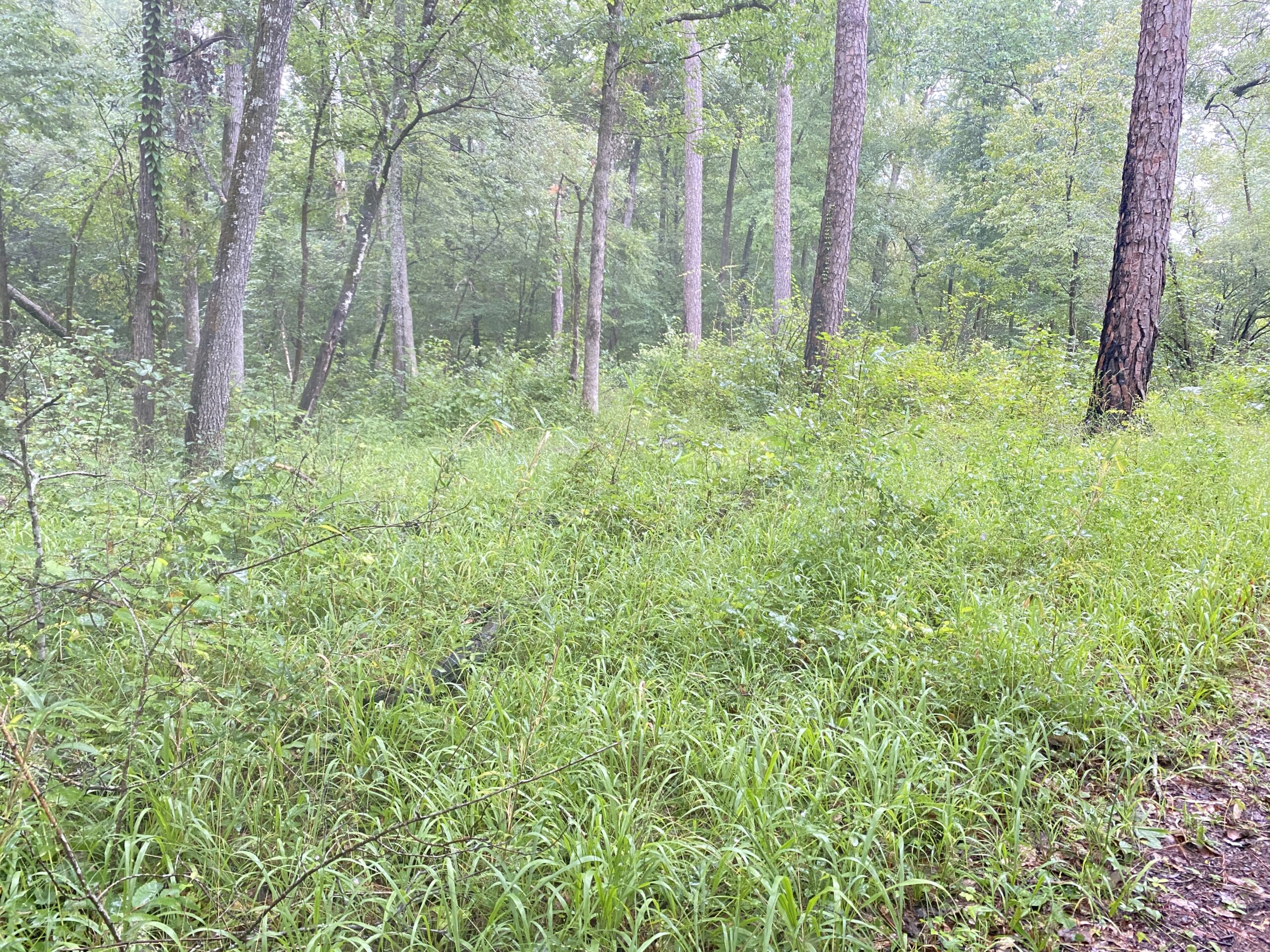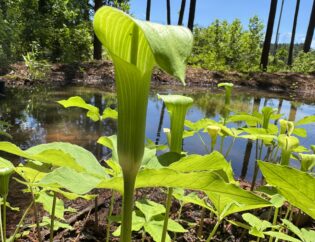
Birds are a joy to listen to and to watch. What backyard is complete without them? Sadly, songbird populations have declined steeply over the past four decades. Habitat destruction both here in North America, where many species nest and rear their young, and in the warm Caribbean islands and areas of Central America where neotropical bird species migrate to spend the winter months is a major factor in this decline. Other factors include a lack of food resources and over-predation by introduced animals, ie: animals not native to an ecosystem. (Ehrlich, Paul R., Dobkin, David S., and Wheye, Darryl. The Decline of Eastern Songbirds. 1988)
How do We Protect our Birds?

Nesting space:
Plant shrubs and vines with protective vegetation. Thorny shrubs, plants and vine tangles will help to protect nests and nestlings. Slender, thorny stems will help prevent larger predators such as raccoons and cats from attacking nests and stealing eggs or killing chicks. Many thorny shrubs also perform double duties by providing fruit and berries from summer through fall.
Low, brambly shrubs such as garden variety Blackberries, Raspberries, (Rubus spp), or Southern Dewberry (Rubus trivialis), provide delicious nibbles for us humans, while attracting birds and furnishing them with a food and cover. They can be kept in check in a small yard, but the neater they are, the less cover they provide.
Devil's Walking Stick (Aralia spinosa) is an important food source for migratory birds. In summer it sprouts an enormous (3 foot diameter), misty plume covered with simple flowers that attract all manner of butterflies and other pollinators while blooming. It will also support 3 to 5 birds feeding at one time when the purple berries ripen in fall, which is quite a sight! Devil's Walking Stick has one of the largest, lacy bi-pinnate leaves of any plant in North America. This prickly small tree will form a fairly large colony and would do well in a back corner of a large yard.

Hawthorns (Crataegus spp.) these are an underused, extremely handsome group of shrubs/small trees. When mature, their small rose-like flowers range in size from 1.25 inches across to clusters of smaller, 3/8 inch flowers. Their slender branches usually have thorns making it doubly hard for larger predators to climb up to nesting sites. The fall sees hawthorns covered in small fruits that can be enjoyed by birds and humans alike.
The large white flower is Crataegus uniflora, or Dwarf Hawthorn. The flower is roughly the size of a quarter, the fruit are similar to rose hips. They are edible, have the fragrance of golden delicious apples when ripe, and were used by First Peoples and colonists.


Below, the small tree with red berries is Parsley Leaf Hawthorn, Crataegus marshallii. The center of the photo shows the shrub shielding a mocking bird nest from the feral cats in a warehouse district. Mockingbirds have nested in this same tree for 6 years. The plentiful berries are winter persistent, and stay scarlet on the tree throughout the winter, providing winter forage for wildlife.

Cover: A Safe Haven
After fledging, but before becoming flight savvy, nestlings need cover: places to flee from neighborhood cats and dogs. Here are a few ways to thwart Tabby and Fido from making a snack out of local baby birds:

Ferns Provide a densely planted fern thicket in a shady side border. Moist areas with deep shade in the back yard are perfect for hardier ferns such as New York Fern, Thelypteris novaboracensis (also a species native to the Southeast), Southern Lady Fern, Athyrium felix femina, Log Ferns (native Dryopteris species) or or Christmas Ferns, Polystichium acrostichoides. New York Fern makes a beautiful feathery colony of fronds. Native species of Log Ferns and Christmas Ferns are evergreen.
I have seen cats completely flummoxed when trying to pursue an animal into a thicket of ferns. New York Fern would make colonies without swamping a backyard. Planting a small stand of other native species of ferns would be beneficial in smaller garden spaces. The idea is to give hiding places, cover, from predators.
Cinnamon Ferns, Royal Ferns, Beech Ferns, and Sensitive Ferns are also good cover, but need a consistently moist location. These ferns are good for slow eddies along streams and boggy areas in shade.
Bracken Fern will survive 6 hours of sun a day and fairly dry soils. It does make a wonderful escape for chipmunks and nestlings. The stems are tough, the fronds can be three to four feet tall. Beware! Bracken Fern is an aggressive native plant that needs a few acres to take over. If you have a huge yard or property, you'll be fine.
Grasses and Sedges
My father-in-law was never satisfied that grass just would not grow in the shady bits of his yard. There was never going to be a bag of seed in the big box stores that would give him what he wanted. Turf grass is the wrong kind of grass for that situation; it hates shade.
Not only are lawns boring, mowed monoculture lawns make crappy habitat. Commonly sold turf grasses are not native to the US: Fescue (Festuca rubra) is from Europe, Bermuda grass (Cynodon dactylon) is actually from Africa, Australia, Europe and Asia, even Kentucky Bluegrass (Poa pratensis) is NOT from Kentucky, but from Europe and Northern Asia.
Southeastern North America has lots of beautiful shady grasses and delicate sedges that will grow under open canopies of trees.
Slender Wood Oats, Chasmanthium sessiliflorum, is a grass that prefers open shade. Here a stand of Slender Wood Oats covers the forest floor along the moist bottomlands near the Broad River. The grass provides bountiful seeds for birds and wildlife, and you can see how the feathery clumps would make good habitat for wildlife in general.


In a drier woodland, Black Spear Grass - Piptochaetium avenaceum, colonizes semi xeric forest floors in a granite glade.
There are also several species of sedges that will colonize and provide food, cover, and habitat for birds and wildife in shady yards. Cherokee sedge, Carex cherokeensis, will colonize in moderate soils with good drainage. Blue wood sedge, Carex flaccosperma, prefers colonizing moist locations and richer soils. Both species provide plump seeds for birds and good cover from predators. Both species are also evergreen in Georgia.
Brush pile A loosely bunched brush pile in the back of the yard is a very effective way to deter predation of small wildlife. Brush piles don’t have to be huge, but should be large enough to keep a persistent cat from getting to the center. The moist, slowly decaying wood at the bottom of the brush pile also creates an excellent habitat for tiny wildlife such as salamanders and larger limbs can provide homes for mason bees.
Do not use pressure treated wood products in your brush pile. Pressure treated wood is toxic, and will poison the small wildlife and beneficial insects that both feed the birds and benefit your garden.
An added long term benefit of keeping a small brush pile at the back border of the yard is that it will gradually enhance your soil biology, providing food and homes to beneficial soil fungi and bacteria. After a few years the soil under the brush pile will have become very rich, at which point you might want to start a fresh brush pile in a different corner of the yard as you consider which humus-loving native plant(s) to place in your newly enriched bed.
Sources:
Ehrlich, Paul R., Dobkin. David S., and Wheye, Darryl. The Decline of Eastern Songbirds. http://www.stanford.edu/group/stanfordbirds/text/essays/Eastern_Songbirds.html. Stanford University. Stanford. 1988









